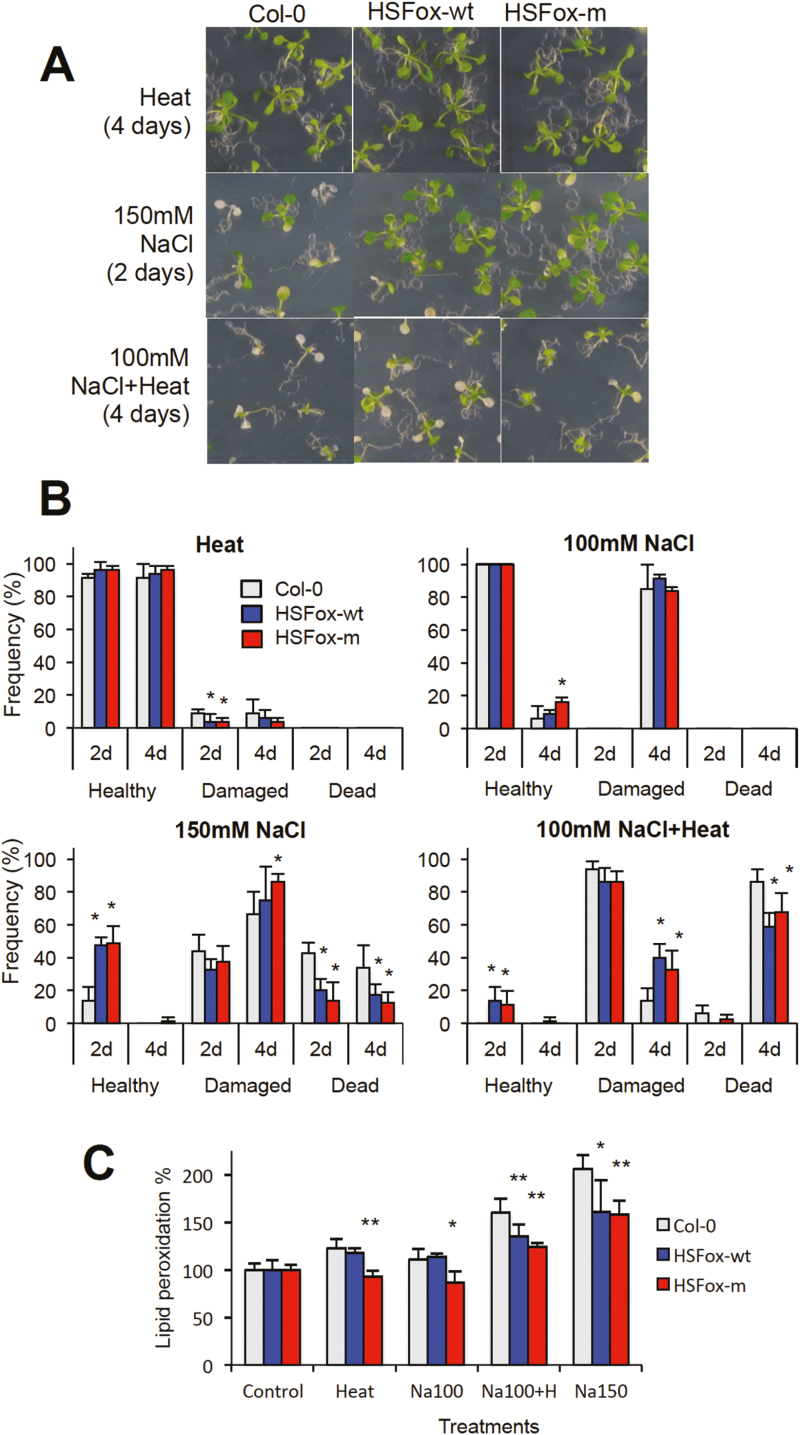Fig. 6.
HSFA4A overexpression enhances tolerance to heat and salt stresses. Ten-day-old in vitro-grown plantlets were treated by salt (100 mM, 150 mM NaCl), heat (37 °C in light, 30 °C in dark) or their combination for 2 or 4 d. Rates of surviving healthy (vigorous growth with several new green leaves), damaged (small plants with retarded growth and/or chlorotic leaves), and dead plants (completely chlorotic with no green leaves) were scored 10 d after recovery. Similar results were obtained with independent transgenic lines of both constructs and one representative transgenic line was used for each construct in this experiments. (A) Growth of wild-type (Col-0) and transgenic plants overexpressing the wild-type (HSFox-wt) and S309D mutant (HSFox-m) forms of HSFA4A after heat, 150 mM NaCl, and combined 100 mM NaCl and heat treatments. (B) Frequencies of healthy, damaged, and dead plants after heat, salt, and combined heat and salt stresses applied for 2 or 4 d. Survival frequencies of control, non-stressed plants (all survived and healthy) and plants treated by 150 mM NaCl and heat (all dead) are not shown. (C) Lipid peroxidation rates of wild-type and HSFA4A-overexpressing lines. Values are normalized to control, non-treated plants. Error bars indicate standard deviation; asterisks indicate significant differences to Col-0 wild-type plants: *P<0.05 and **P<0.01 (Student’s t-test).

